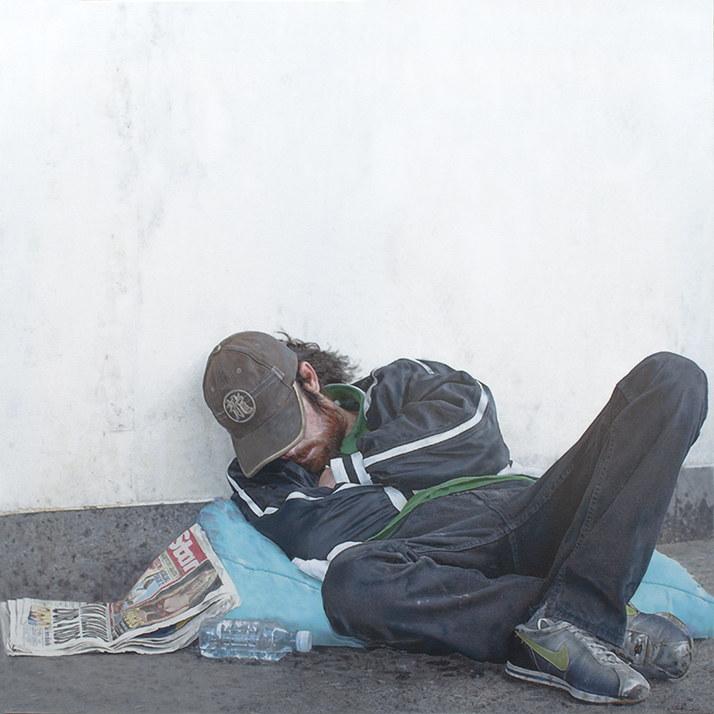-
denis peterson
Dust to Dust 39" x 39" Acrylics on canvas
 Excerpted from Wikipedia
Excerpted from Wikipedia
Denis Peterson was one of the first Photorealists to emerge in New York.
His large floor-to-ceiling airbrushed figurative works, shown at the Brooklyn Museum, were distinguished by "cropping"
the picture frame as an aesthetic subversion of photography.
It was both a novel approach and a noteworthy departure from the more genre photorealist paintings; one that is now commonly employed by contemporary figurative painters.
Denis is widely acknowledged as the pioneer and primary architect of Hyperrealism,
a splinter art movement which he founded on the cultural principles of Jean Baudrillard.
His hyperrealist paintings are exhibited at public museums and commercial galleries throughout the US and Europe. Art history textbooks
recently memorialized "Dust to Dust" as a historically significant painting marking the start of hyperrealism
on a civilization of art timeline.
Peterson distinguished hyperrealism from photorealism, making meticuolous changes to a work's depth of field, color, and composition
in order to emphasize a socially conscious message about contemporary culture and politics.
His hyperrealist paintings are visual statements peppered with underlying socio-economic paradigms.
In viewing them, it becomes immediately apparent that techniques and methods are a product of his work, not the other way around.
The illusion of reality as a transformational aesthetic is a virtual means to an end.
His work addresses a sense of loss, pain/angst concerning our position in a culture dominated by corporate America.
People are viewed (once again) as individuals, though in the overwhelming commodification of everything, some so completely lost,
that they are no longer individuals...caught in the social/political/cultural juggernaut.
A native New York artist, Denis paints fulltime in his studio, producing works in thematic series.
His paintings are actively sought by prominent collectors and renowned art patrons worldwide.